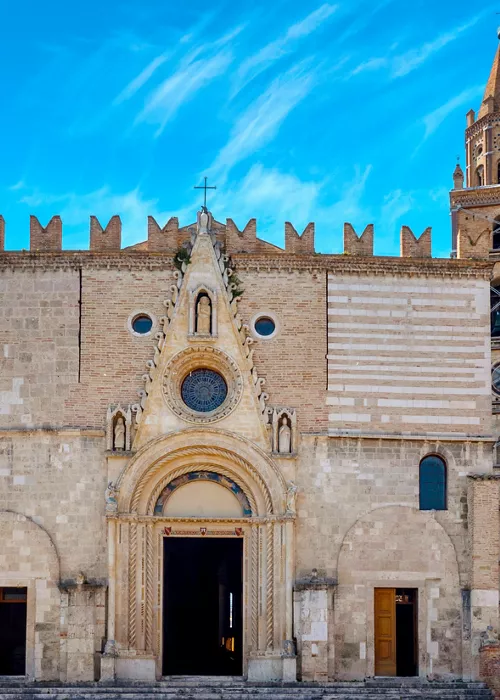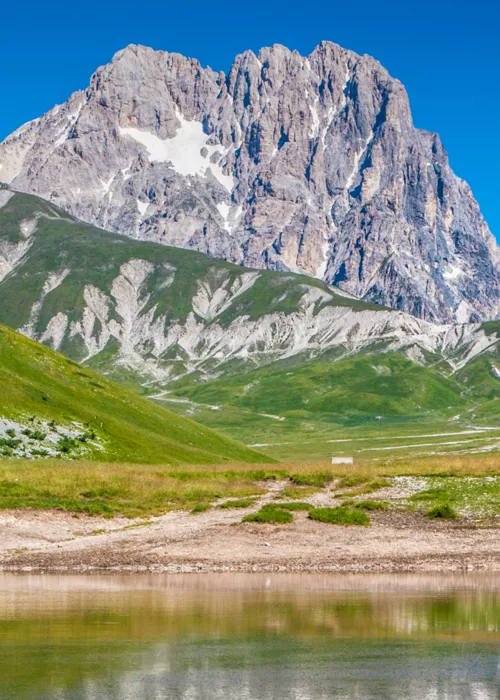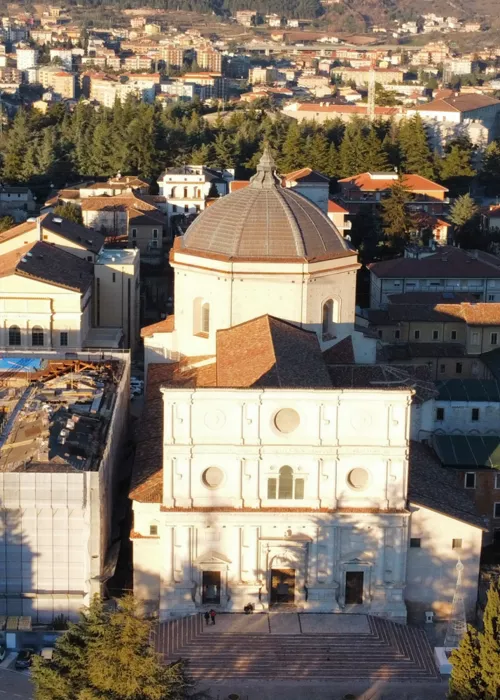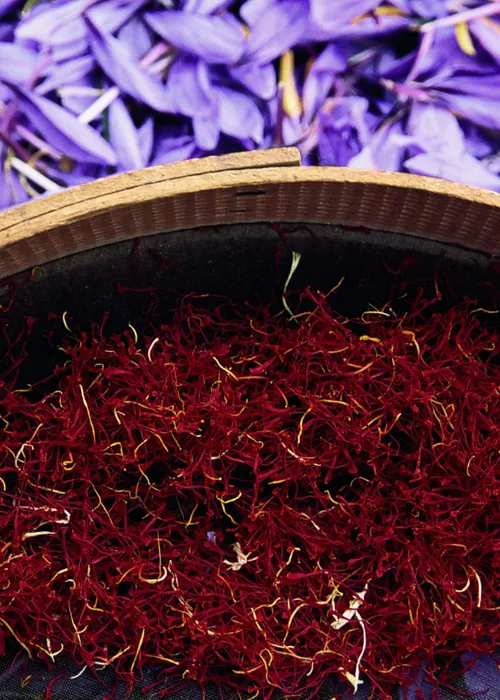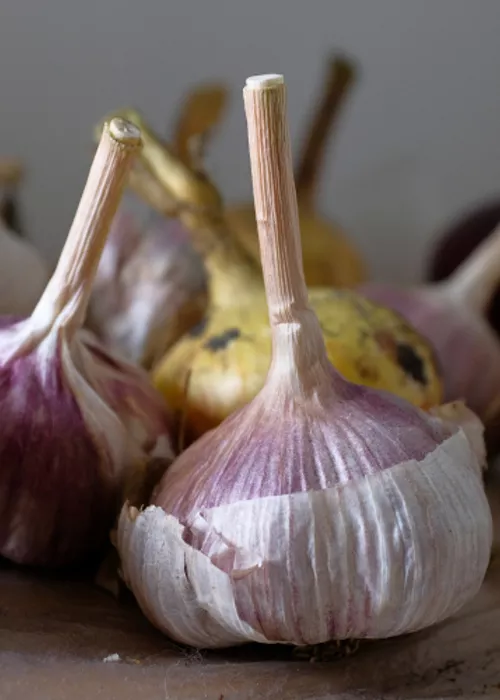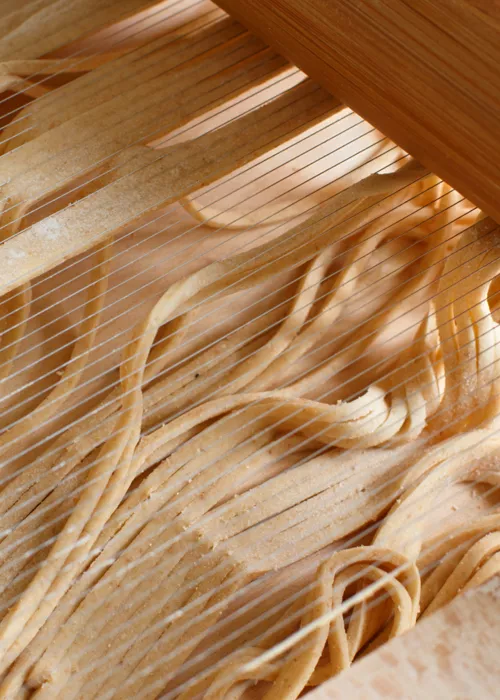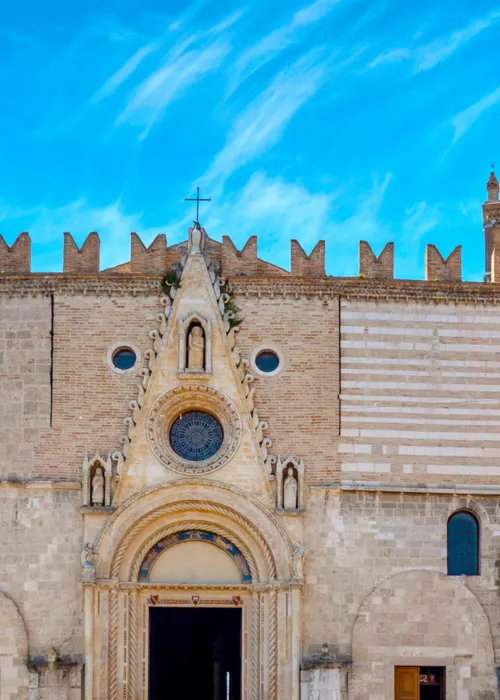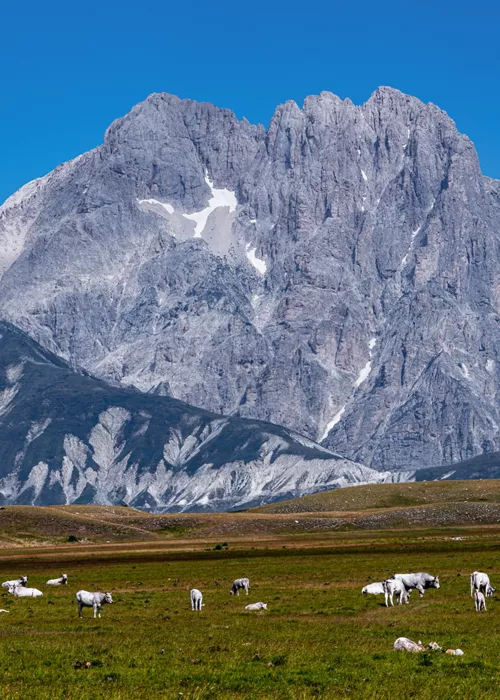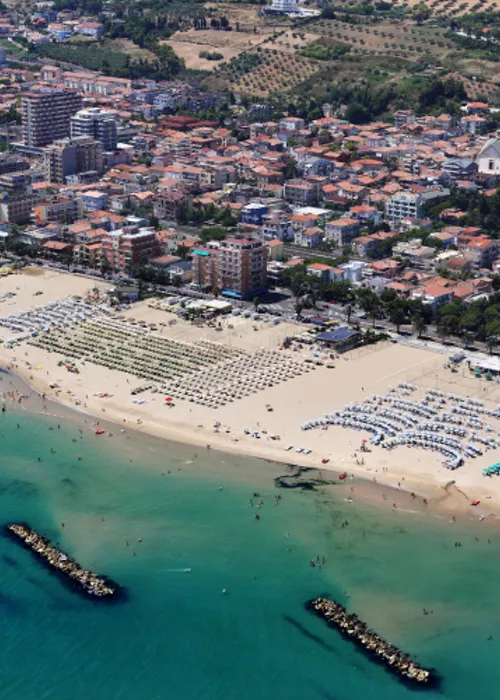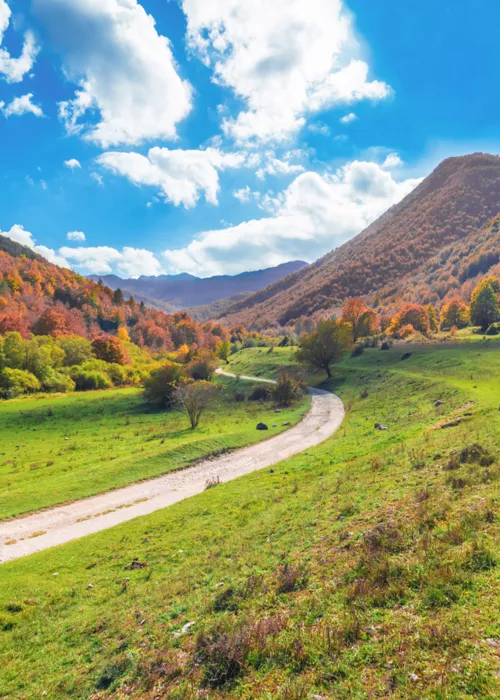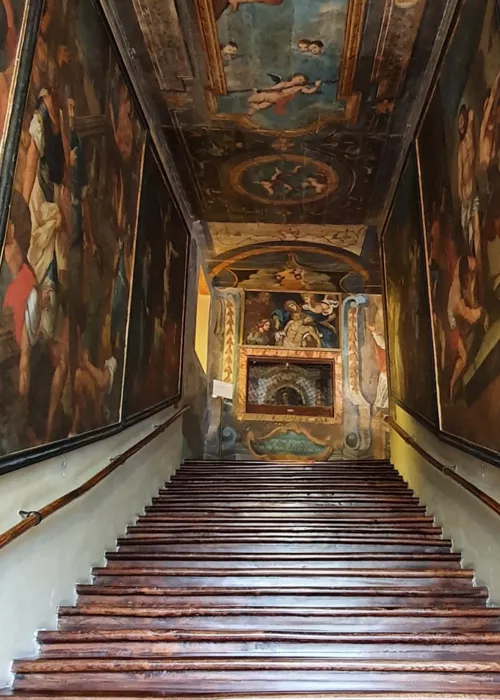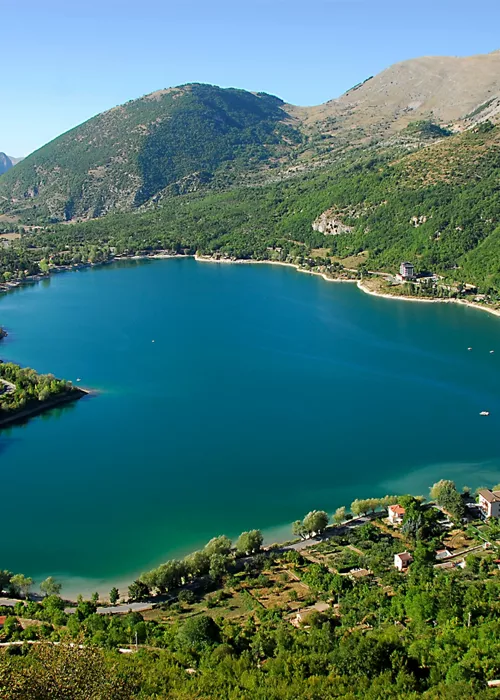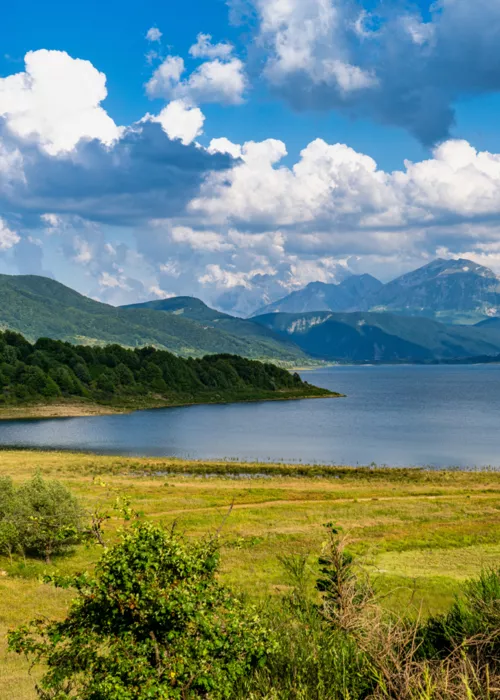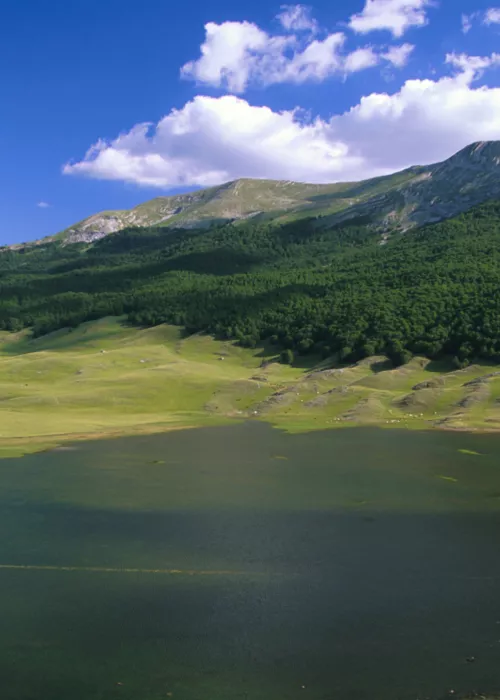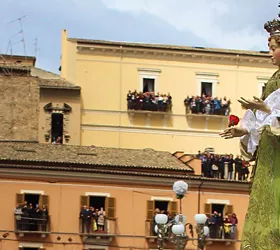Arrosticini: the pride and heritage of Abruzzo gastronomy
4 minutes
A typical regional dish, Abbruzzo’s arrosticini are a delicacy that has crossed national borders to become world famous. This a product that is linked to the pastoral tradition and that evokes all the romance of transhumance.
Prepared with sheep meat (as well as other types of meat), the recipe has changed over time, but one thing remains the same: arrosticini are eaten with the hands.
Product characteristics and preparation
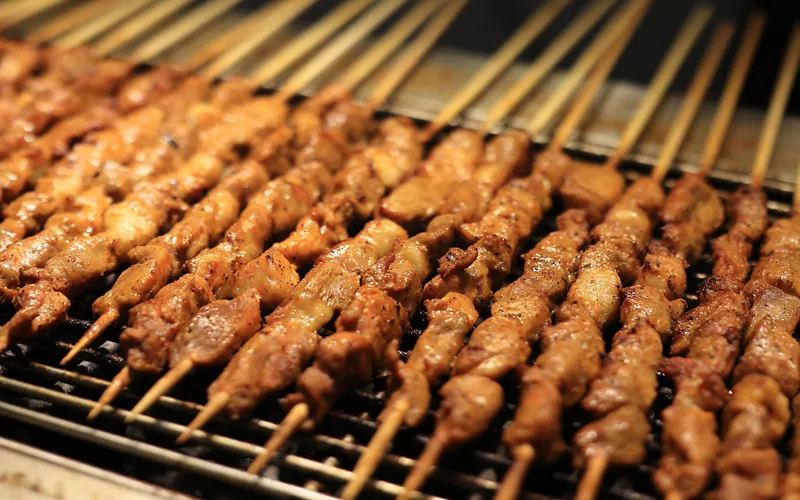
Originally known as rustell', rustelle or arrustelle, arrosticini are made of cubes of meat, about one centimetre thick on each side, that are threaded onto a wooden skewer, called li cippe or li cippitill, up to 20 centimetres long.
Originally prepared from lamb or castrated sheep meat, with a fat content of about 25 per cent, arrosticini have evolved over time.
Today, in fact, you can find several variations of them, and as well as lamb arrosticini, you can also try turkey, chicken and pork arrosticini.
The latest arrivals are arrosticini di “fect”, or liver arrosticini, in which each piece is interspersed with a bay leaf or a slice of onion, to assuage the otherwise overly strong flavour.
An essential characteristic of all the various forms of this dish is the presence of fat, which determines its tenderness and flavour.
To prepare arrosticini, the meat must be roasted immediately after it is cut and must then be acidified. Both processes take place in cold storage or in cold environments during the winter season, and take between 3 and 7 days. The result will be skewers of a more or less intense red colour, depending on the age of the animal. These will weigh between 20 and 30 grams.
To give an extra touch of flavour, the arrosticini are seasoned with natural flavourings such as onion, chilli pepper or sage.
If you want to try a more gourmet version, why not choose arrosticini with truffle oil?
Origins and area of production
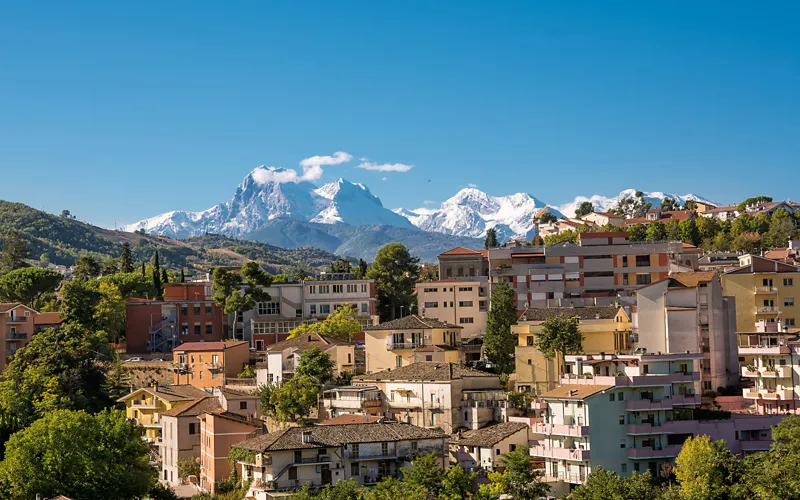
There are various, often conflicting, historical versions of the origins of arrosticini.
Two provinces compete for the paternity of this delicacy: Teramo and Pescara. Certainly, the invention of this product can be traced back to the eating habits of the shepherds who inhabited the area between the valleys and mountains of the Gran Sasso, more specifically the area extending from the Piana del Voltigno (Villa Celiera) to the border between the provinces of L'Aquila, Teramo and Pescara.
What is certain is that today, arrosticini are produced across the entire region and are rightfully listed among the “Prodotti Agroalimentari Tradizionali italiani” (PAT) (Italian Traditional Food Products).
Cooking method
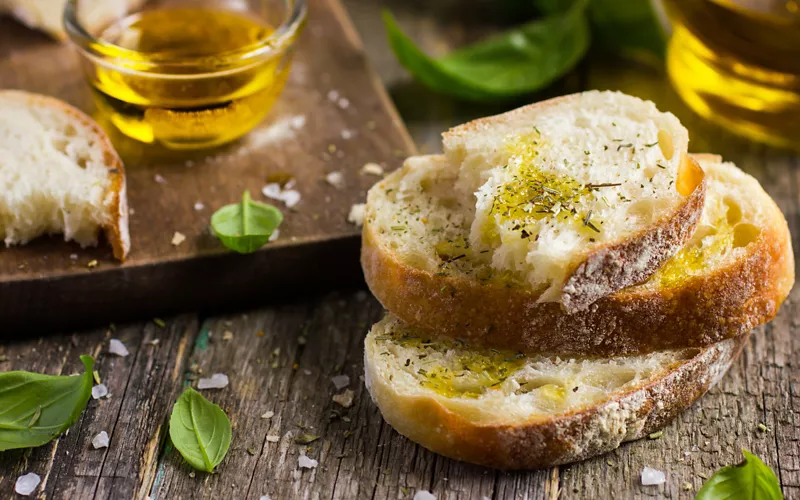
The best way to enjoy Abruzzo's arrosticini is definitely to cook them on wood embers.
It is said that in 1830, two shepherds from Voltigno were the first to use this method of preparation: they cut up the meat of an old sheep, stuffed the pieces onto small wooden sticks and cooked them over the coals of an improvised grill made with pieces of a drainpipe. Even today, the grill typically used is called a “canala” due to its shape reminiscent of guttering.
Drizzled with oil, mixed with vinegar and salt, and brushed with sprigs of rosemary, arrosticini should be eaten hot, accompanied by lu pane 'onde, toasted bread seasoned with extra virgin olive oil and salt. This is all ideally accompanied by a fine glass of wine: Montepulciano d'Abruzzo DOC is perfect.
Tradition dictates that this meal should be cooked and eaten outdoors. Why not take this as an opportunity to plan an outing in the Abruzzo countryside?
Events and festivals
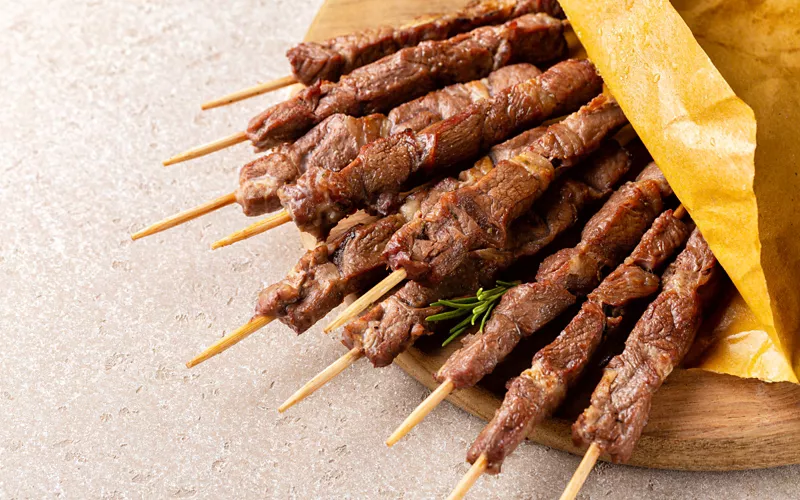
Arrosticini are the stars of numerous festivals throughout the Abruzzo region.
Among the many festivals, mostly organised in the summer in July and August, we would particularly like to highlight the travelling festival Arrostiland, as well as the Arrosticinitreffen motor rally in Fonte Vetica, dedicated to motorcyclists from all over Italy who wish to spend the night in a tent at 2000 metres above sea level, cooking and eating the typical meat skewers.
Then there is the autumn event “Arrosticciere in Piazza”, in Civitaquana, an evocative historical re-enactment of the origin of this dish, complete with arts and crafts of the time, folklore shows and “primitive” cooking of arrosticini.
A curiosity: the event is named after a photo taken by two Swiss anthropologists in 1930, which became the cover of the book “Gli Abruzzi dei Contadini” (Abruzzo of the peasants) (1923-1930). The photograph is a snapshot of a village festival in Civitaquana, where these small pieces of lamb were cooked on olive or sanguinello branches and roasted between two rows of bricks.
Last but not least, we would like to mention the “Degustando nel borgo” event. Here you might come across something bizarre, as the world's largest arrosticino was made a few years ago: 10 metres in length for a winning entry in the Guinness Book of Records.


